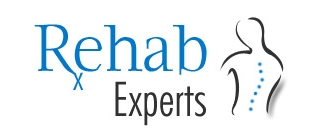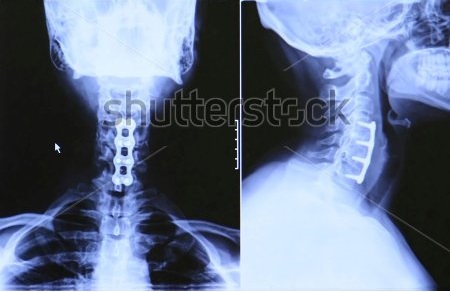Neck pain is extremely common. It can be caused by many things, and is most often related to getting older.
Like the rest of the body, the bones in the neck (cervical spine) slowly degenerate as we age. This frequently results in arthritis. Arthritis of the neck is called cervical spondylosis.
Cervical spondylosis is a common degenerative condition of the cervical spine. It is most likely caused by age-related changes in the intervertebral disks. Clinically, several syndromes, both overlapping and distinct, are seen. These include neck and shoulder pain, suboccipital pain and headache, radicular symptoms, and cervical spondylotic myelopathy (CSM). As disk degeneration occurs, mechanical stresses result in osteophytic bars, which form along the ventral aspect of the spinal canal.
What Are the Risk Factors for Cervical Spondylosis?
Aging is the major factor for developing cervical osteoarthritis (cervical spondylosis). In most people after the age of 50, the discs between the vertebrae become less spongy and provide less of a cushion. Bones and ligaments get thicker, encroaching on the space of the spinal canal.
Another factor might be a previous injury to the neck. People in certain occupations or who perform specific activities — such as gymnasts or other athletes — may put more stress on their necks.
Poor posture might also play a role in the development of spinal changes that result in cervical spondylosis.
What are the symptoms of cervical spondylosis?
If symptoms develop, they can range from mild to severe. Symptoms may include:
- Pain in the neck:
- This may spread to the shoulders and base of the skull. Movement of the neck may make the pain worse.
- The pain sometimes spreads down an arm to a hand or fingers. This is caused by irritation of a nerve which goes to the arm from the spinal cord in the neck.
- The pain tends to come and go with flare-ups from time to time. You may have a flare-up of pain after unaccustomed use of your neck, or if you sprain a neck muscle or ligament.
- However, a flare-up often develops for no apparent reason. Some people develop chronic (persistent) pain.
- Some neck stiffness, particularly after a night’s rest.
- Headaches may occur. The headaches often start at the back of the head just above the neck and travel over the top to the forehead.
- You may develop ‘pins and needles’ in part of an arm or hand. This symptom is caused by irritation of a spinal nerve as it leaves the bony (vertebral) area. However, do tell a doctor if loss of feeling (numbness) or weakness develops in a part of a hand or arm. These symptoms suggest more pressure on a nerve. This is called a ‘cervical radiculopathy’.
- More rarely, clumsiness of a hand, problems with walking, or problems with bladder function occur when pressure from a worn bone (vertebra) or disc damages the spinal cord. This is called ‘cervical myelopathy’. Again, it is important to report these symptoms to a doctor.
Doctor Examination
Determining the source of the pain is essential to recommend the appropriate treatment and rehabilitation. Therefore, a comprehensive examination is required to determine the cause of neck pain.
Your doctor will take a complete history of the difficulties you are having with your neck. He or she may ask you about other illnesses or injuries that occurred to your neck. Questions may include: When did your neck begin to hurt? Has it ever hurt like this before? When your neck hurts, how often and for how long does it hurt? Does anything make it better or worse? Were you ever involved in an accident or had an injury to your neck? Have you ever been treated for your neck pain?
A thorough physical exam will include your neck, shoulders, arms, and frequently your legs, as well. Your strength, touch sensation, reflexes, blood flow, flexibility of your neck and arms as well as your walking may be tested. The doctor may press on your neck and shoulders, and feel for trigger (tender) points or swollen glands.
Tests
Your doctor may supplement your evaluation with blood tests, and, if necessary, consult with other medical specialists. Other tests which may help your doctor confirm your diagnosis include:
X-rays
These pictures are traditionally ordered as a first step in imaging the spine. X-rays will show aging changes, like loss of disk height or bone spurs.
Magnetic resonance imaging (MRI)
This study can create better images of soft tissues, such as muscles, disks, nerves, and the spinal cord.
Computed tomography (CT) scans
This specialized x-ray study allows careful evaluation of the bone and spinal canal.
Myelography
This specific x-ray study involves injecting dye or contrast material into the spinal canal. It allows for careful evaluation of the spinal canal and nerve roots.
Electromyography (EMG)
Nerve conduction studies and electromyography may be performed by another doctor to look for nerve damage or pinching.
Physical Therapy
If symptoms do not improve over a week or so, you may then be referred to a physical therapist to help with pain relief and for advice on specific neck exercises.
Various treatments may be advised by a physical therapist. These include traction, heat, cold, manipulation, etc. The value of each of these treatments is uncertain, as the results of research studies looking at which treatments work best can be conflicting.
However, what is often most helpful is the advice a physical therapist can give on neck exercises to do at home. A common situation is for a doctor to advise on painkillers and gentle neck exercises.
Other treatments
Some other treatments which may be advised include:
- A good posture may help. Check that your sitting position at work or at the computer is not poor (that is, not with your head flexed forward with a stooped back). Sit upright. Yoga, pilates, and the Alexander Technique all improve neck posture, but their value in treating neck pain is uncertain.
- A firm supporting pillow seems to help some people when sleeping. Try not to use more than one pillow.
Range of Motion Therapy
Range of motion therapy involves gentle movement of your cervical vertebrae through their normal range of motion. This typically involves both active and passive stretching of your vertebrae. Active vertebrae stretching involves you moving your head and neck under your own muscle power to stretch your vertebrae. Passive stretching requires a physical therapist, who physically manipulates your neck into various positions to stretch your cervical vertebrae. The goal of this type of therapy is to return your cervical vertebrae to its normal range of motion, which can help relieve stiffness, improve joint movement, and increase flexibility.
Strength Training Therapy
Strength training therapy, or resistance training therapy, helps preserve or increase strength in the muscles that surround and support your cervical vertebrae. There are two main types of vertebral strength training: isometric and isotonic. Isometric strength training exercises for your cervical vertebrae tighten and strengthen your upper back muscles without changing joint position and are most useful when your joints are in pain. Isotonic cervical vertebrae strength training exercises tighten and strengthen the muscles of your upper back by using them to move a weight.
Deep Tissue Massage Therapy
When the joints in between your cervical vertebrae become stiff and loose function and mobility, scar tissue can form. Scar tissue is made up of many tiny collagen fibers that create a web of material that surrounds your cervical vertebrae. The presence of scar tissue can cause deformity, pain, and loss of function and mobility. Deep tissue massage is designed to break up the collagen fibers on your cervical vertebrae so you can regain normal function in your joints.
Water Exercise
Warm water helps relieve pain and relax the muscles that support your cervical vertebrae. You do not need to swim to perform water exercises. Instead, water exercises for your cervical vertebrae may be done while sitting in a shallow pool or standing in shoulder-high water. The support of the water decreases the stress placed on your vertebrae by your body weight and can help move your joints through range of motion exercises more easily.
Reference:
Ortho Info http://orthoinfo.aaos.org/topic.cfm?topic=a00369
Medscape http://emedicine.medscape.com/article/1144952-overview
Patient.Co.UK http://www.patient.co.uk/health/cervical-spondylosis#
WebMD http://www.webmd.com/osteoarthritis/guide/cervical-osteoarthritis-cervical-spondylosis
Live Strong http://www.livestrong.com/article/435973-physical-therapy-for-cervical-spondylosis/

